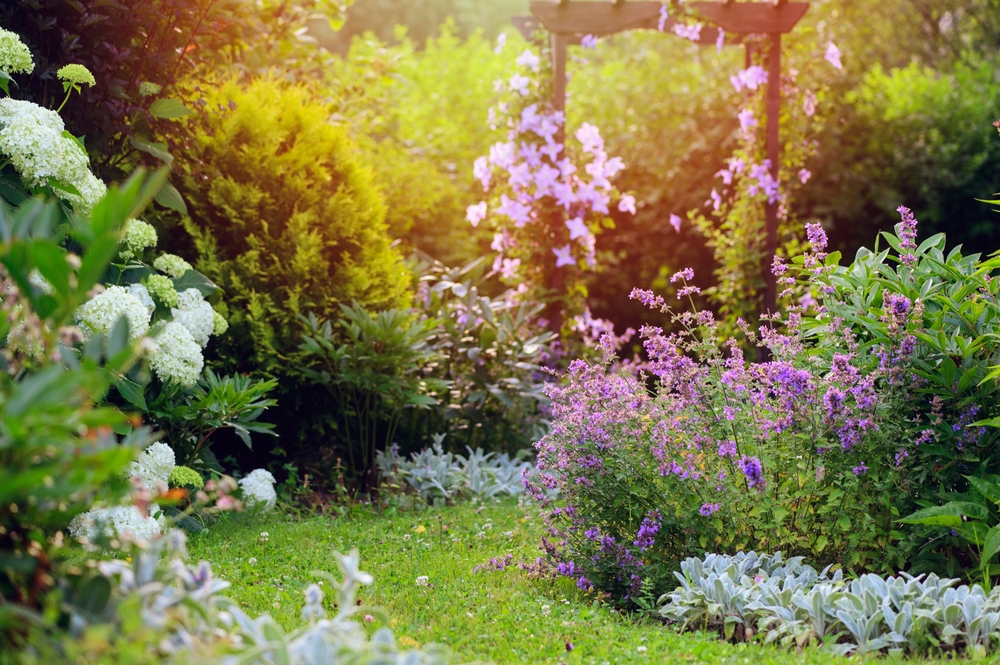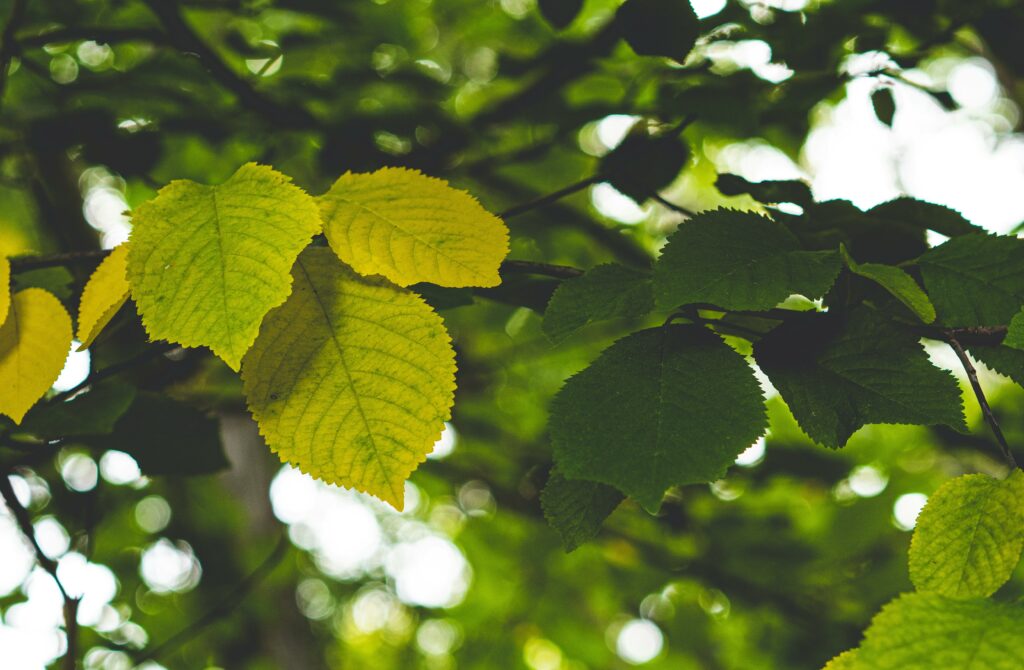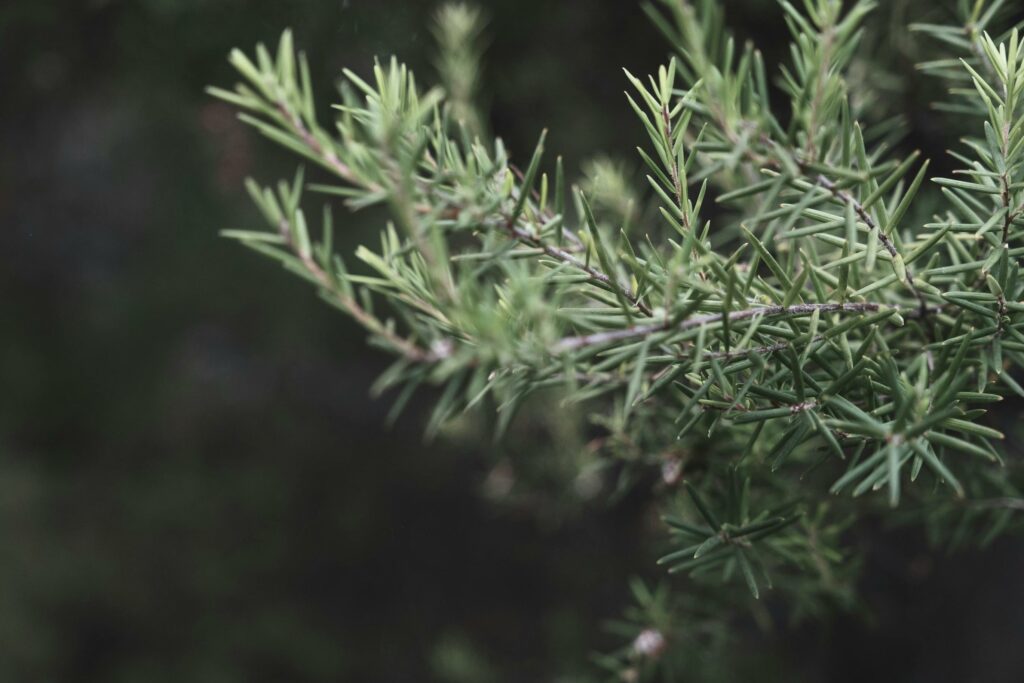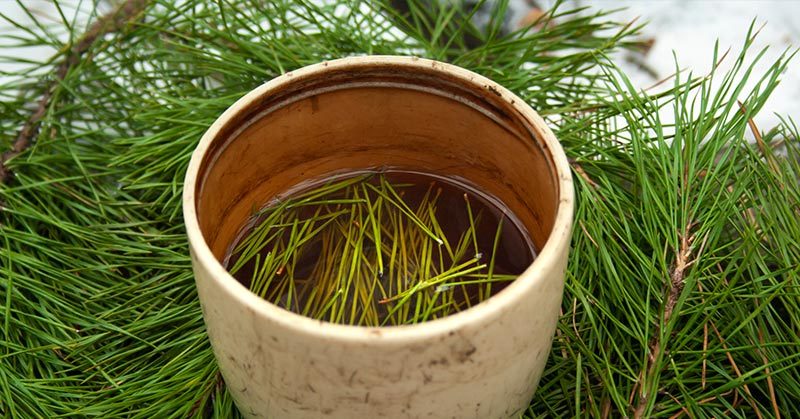Humans have used herbal medicine to treat various ailments for centuries. While there are countless varieties of herbs, we don’t often think of trees as being in that category. Medicinal trees, however, have a number of properties that can help promote both health and healing.
The good news is that you can grow these medicinal trees in your own backyard, so you can reap their benefits on a daily basis.
6 Medicinal Trees that can Grow in Your Backyard

Trees have many components including sap, resin, leaves, berries, blossoms, bark, and nuts. Each of these components contains unique medicinal properties that may benefit your circulatory system, immune system, and cardiovascular system, as well as improve other parts of your body like your skin and eyes.
The following medicinal trees can provide you with a number of potential health benefits.
Read More: The Top 10 Medicinal Plants and Herbs for Your Health
1. Elder Tree

All parts of the elder tree are useful. You are likely familiar with its berries, which many people use to make pies, jams, juice, and syrup. Aside from tasting great, however, these berries also provide health benefits.
Specifically, research has found that elderberries may help fight the flu [14]. Its anti-flu actions are thanks to the berry’s primary compound, cyanidin 3-glucoside. Elderberry extract has been shown to block viral glycoproteins, which help viruses enter your cells, as well as increase the number of cytokines in your blood that help fight infection [1].
Wellnessmama provides the following recipe for you to make your own elderberry cold and flu syrup at home:
Ingredients
- 3½ cups water
- 2/3 cup dried elderberries (or 1 1/3 cups fresh or frozen)
- 2 TBSP ginger (grated)
- 1 tsp cinnamon
- ½ tsp ground cloves
- 1 cup raw honey
Instructions
- Pour the water into a medium saucepan and add the elderberries, ginger, cinnamon, and cloves.
- Bring to a boil and then cover and reduce to a simmer for about 45 minutes to 1 hour until the liquid has reduced by almost half.
- Remove from heat and let cool until it is cool enough to be handled.
- Mash the berries carefully using a spoon or other flat utensil.
- Pour through a strainer into a glass jar or bowl.
- Discard the elderberries and let the liquid cool to lukewarm.
- When it is no longer hot, add the honey and stir well.
- When the honey is well mixed into the elderberry mixture, pour the syrup into a mason jar or 16-ounce glass bottle of some kind.
- Ta-da! You just made homemade elderberry syrup! Store in the fridge and take daily for its immune-supporting properties.
2. White Pine

The Indigenous Peoples of North America have been using the resin and the needles of the Eastern White Pine for centuries for their healing properties. They often smeared the resin over wounds as an antiseptic, and they used a concoction made from the needles to treat scurvy.
In fact, in 1536, Jacques Cartier’s crew used this medicinal tree concoction from the Iroquois to cure them of vitamin C deficiency disease. The Iroquois made the remedy by boiling the leaves (needles) and bark of the tree and drinking it as tea [2].
Pine needles can also help soothe sore throats from a cold. One easy way to get the benefits of pine needles is to make vinegar.Eatweeds.co.uk provides the following instructions:
Pine Needle Vinegar Recipe Ingredients
- 500ml glass jar with rubber lid insert
- 500ml organic apple cider vinegar
- Handfuls of Pine Needles (chopped and bruised)
Pine Needle Vinegar Recipe Instructions
- Take your clean, sterile glass jar and add enough Pine needles so the jar is packed tight.
- Pour 500ml of raw organic apple cider vinegar over your jar with pine needles in, and fill to the top. Screw on the cap.
- Leave in a darkened cupboard for six weeks, then use at your discretion.
Makes: 500ml You can add a few drops of vinegar to hot water, add a bit of honey, and sip on it for cold relief.
3. Elm

Slippery Elm is native to the Central and Eastern United States, as well as Ontario, Canada. The inner bark of the slippery elm has a number of therapeutic uses:
Inflammatory Bowel Disease (IBD)
Slippery Elm is a demulcent, which means it can help soothe the lining of the stomach and the intestines and reduce inflammation. There is a small amount of research to suggest that this medicinal tree can help treat the symptoms of IBD, such as Crohn’s disease, ulcerative colitis, and irritable bowel syndrome (IBS) [3].
More research is needed to fully investigate and substantiate these effects. Before using slippery elm for this purpose, consult with your doctor.
Soothing a Sore Throat
You can find slippery elm in many commercial brands of throat lozenges. This is because it contains mucilage, which coats and soothes the throat. Some people also use it to treat coughs, however, there is limited research to support or deny its antitussive effects [4].
Slippery elm may also be useful for treating urinary tract infections, heartburn, and gastroesophageal reflux disease, but there have not been very many studies to support these effects [4].
To use this medicinal tree, you can purchase lozenges that contain slippery elm or purchase slippery elm tea. Many health food stores will carry teas that contain it, along with other beneficial herbs to soothe your cold symptoms.
4. Birch

People in Northern Europe and China have been using birch water for its potential health benefits for centuries. Birch water refers to the sap that comes from the birch tree, which can be made into beer, wine, syrup, or mead. You can also consume it as-is [5].
Birch water is high in several nutrients, especially magnesium and manganese. This can help prevent bone loss, particularly in older women [6].
Birch water can also provide significant amounts of polyphenol antioxidants, which protect your cells against oxidative damage and free radicals [7].
The vitamin C content in the medical tree water can also help support the health of your skin and hair. For this reason, it has become a popular ingredient in many lotions and creams in the cosmetic industry [8].
You can purchase birch water in stores or online, but keep in mind that many brands will add other ingredients like sugar to it, so read your labels carefully.
Read More: Broadleaf Plantain: Unveiling the Marvels of Nature’s Medicinal Herb
5. Juniper

You may recognize this medicinal tree as a flavoring agent for gin, but it also provides a number of potential health benefits.
Traditionally, people have used juniper berries or extract of the plant as a diuretic, anti-arthritis, anti-diabetes, and antiseptic, as well as for the treatment of gastrointestinal and autoimmune disorders.
Some studies have also found that juniper has anti-inflammatory, cytotoxic, hypoglycemic, and hypolipidemic properties.
The medical community, however, has done very little research to definitively prove these effects. What’s more, juniper can cause adverse health effects over time, or if you take it in large doses. If you choose to use them medicinally, you should talk with your doctor first [9].
6. Linden

The Linden tree grows in parts of North America, Europe, and Asia, where people have been using linden tea as a sedative for hundreds of years [10]. This medicinal tree may also provide a number of health benefits including:
- Promote relaxation. The sedative properties of linden tea can help you to relax and reduce anxiety by mimicking the activity of GABA-aminobutyric acid (GABA), a brain chemical that inhibits excitability in the human nervous system [11].
- Fight inflammation. The research on linden tea specifically is limited, but the flowers contain compounds like antioxidants that may help lower your risk for disease [10].
- Reduce mild pain. Tilleroside and quercetin are two antioxidants in linden tea that may help reduce pain symptoms. It is impossible, however, to know exactly how much of these compounds you are getting in a cup of tea, so researchers do not yet know how much tea you need to drink in order to benefit from these effects [12,13].
- As a diuretic. The evidence for this is largely anecdotal, but linden tea can encourage sweating and productive coughs to help your body rid itself of minor illnesses [10].
- Lower blood pressure. While linden tea should never replace heart medication, some of the compounds it contains, such as tiliroside, rutoside, and chlorogenic acid, may help lower your blood pressure [10].
- Promote sleep. Again due to its sedative effects, linden tea may help you fall asleep at night [10].
If you don’t have your own medicinal tree, you can purchase linden tea at many health food stores.
Precautions When Considering Medicinal Trees

Medicinal trees can provide a wide range of health benefits. That being said, it is important to remember that just because something is “natural” or “herbal” does not necessarily mean that it is safe to take.
In particular, if you have any medical conditions that you are already taking medication for, you should talk with your doctor before adding any herbal supplement to your daily regime. In addition, if you begin using an herbal remedy and start noticing any adverse reactions, you should discontinue use immediately.
Finally, and perhaps most importantly, keep in mind that the majority of the benefits of medicinal trees warrant more study. Herbal remedies have many promising benefits, but science has not yet been able to definitively prove many of them. For this reason, herbal remedies should never replace any medication your doctor has given to you, and you should never rely on it to treat any serious medical conditions.
Read More: Miracle Medicinal Plant: 17 Ways to Use Aloe Vera for Health and Beauty
Disclaimer: This information is not intended to be a substitute for professional medical advice, diagnosis or treatment and is for information only. Always seek the advice of your physician or another qualified health provider with any questions about your medical condition and/or current medication. Do not disregard professional medical advice or delay seeking advice or treatment because of something you have read here.
Sources
- https://agris.fao.org/agris-search/search.do?recordID=US201900100392
- https://ethnobiomed.biomedcentral.com/articles/10.1186/1746-4269-5-5
- https://www.ncbi.nlm.nih.gov/pmc/articles/PMC3271691/
- https://www.webmd.com/vitamins/ai/ingredientmono-978/slippery-elm
- https://pbsociety.org.pl/journals/index.php/asbp/article/view/asbp.2012.036/998
- https://www.ncbi.nlm.nih.gov/pubmed/8027856
- https://www.researchgate.net/publication/312026635_The_Bioactive_and_Mineral_Compounds_in_Birch_Sap_Collected_in_Different_Types_of_Habitats
- https://www.researchgate.net/publication/322711187_Chemical_characterization_and_in_vitro_evaluation_of_birch_sap_and_a_complex_of_plant_extracts_for_potential_use_in_cosmetic_anti-ageing_products
- https://www.sciencedirect.com/science/article/pii/S2405844019360360
- https://www.ema.europa.eu/en/documents/herbal-report/final-assessment-report-tilia-cordata-miller-tilia-platyphyllos-scop-tilia-x-vulgaris-heyne-their_en.pdf
- https://www.ncbi.nlm.nih.gov/pubmed/26144285
- https://onlinelibrary.wiley.com/doi/full/10.1111/1541-4337.12389
- https://www.ncbi.nlm.nih.gov/pubmed/28003714

